
Pretoria is South Africa's administrative capital, serving as the seat of the executive branch of government, and as the host to all foreign embassies to South Africa.
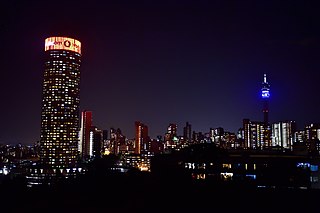
Johannesburg is the most populous city in South Africa with 4,803,262 people, and is classified as a megacity; it is one of the 100 largest urban areas in the world. It is the provincial capital and largest city of Gauteng, which is the wealthiest province in South Africa. Johannesburg is the seat of the Constitutional Court, the highest court in South Africa. Most of the major South African companies and banks have their head offices in Johannesburg. The city is located within the mineral-rich Witwatersrand hills, the epicentre of the international-scale mineral, gold and (specifically) diamond trade.

The University of the Witwatersrand, Johannesburg, commonly known as Wits University or Wits, is a multi-campus public research university situated in the northern areas of central Johannesburg, South Africa. The university has its roots in the mining industry, as do Johannesburg and the Witwatersrand in general. Founded in 1896 as the South African School of Mines in Kimberley, it is the third oldest South African university in continuous operation.

The Canadian Museum of Nature is a national natural history museum based in Canada's National Capital Region. The museum's exhibitions and public programs are housed in the Victoria Memorial Museum Building, a 18,910-square-metre structure (203,500 sq ft) in Ottawa, Ontario. The museum's administrative offices and scientific centres are housed at a separate location, the Natural Heritage Campus, in Gatineau, Quebec.
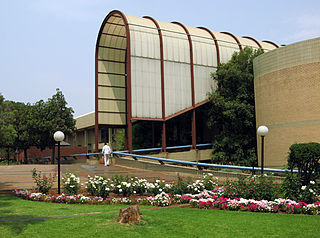
The Ditsong National Museum of Cultural History is a museum that showcases the various stages and forms of culture in South Africa. It is part of the Ditsong Museums of South Africa. The museum is located in Pretoria, Gauteng, South Africa.

Austin Roberts was a South African zoologist. He is best known for his Birds of South Africa, first published in 1940. He also studied the mammalian fauna of the region: his work The mammals of South Africa was published posthumously in 1951. The 7th edition of Roberts' Birds of Southern Africa which appeared in 2005, is the standard work on the region's birds.

Mrs. Ples is the popular nickname for the most complete skull of an Australopithecus africanus ever found in South Africa. Many Australopithecus fossils have been found near Sterkfontein, about 40 kilometres (25 mi) northwest of Johannesburg, in a region of Gauteng now designated as the Cradle of Humankind World Heritage Site. Mrs. Ples was discovered by Robert Broom and John T. Robinson on April 18, 1947. Because of Broom's use of dynamite and pickaxe while excavating, Mrs. Ples's skull was blown into pieces and some fragments are missing. Nonetheless, Mrs./Mr. Ples is one of the most "perfect" pre-human skulls ever found. The skull is currently held at the Ditsong National Museum of Natural History in Pretoria.
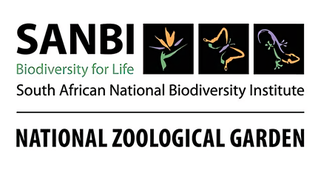
The National Zoological Garden of South Africa is an 80-hectare (200-acre) zoo located in Pretoria, South Africa. It is the national zoo of South Africa, and was founded by J. W. B. Gunning in 1899. Pretoria Zoo is one of the eight largest zoos in the world

Pretoria Boys High School is a public, tuition-charging, English-medium high school for boys situated in the suburb of Brooklyn in Pretoria in the Gauteng province of South Africa, founded in 1901 by Alfred Milner, 1st Viscount Milner.

Samuel Marks was a Russian Empire-born South African industrialist and financier.
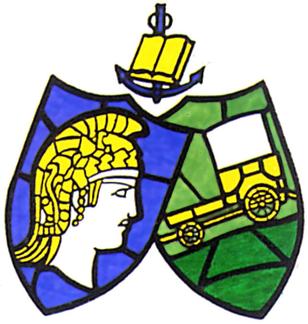
Transvaal University College was a multi-campus public research university in South Africa which gave rise to the University of the Witwatersrand and the University of Pretoria.

The University of Pretoria is a multi-campus public research university in Pretoria, the administrative and de facto capital of South Africa. The university was established in 1908 as the Pretoria campus of the Johannesburg-based Transvaal University College and is the fourth South African institution in continuous operation to be awarded university status. The university has grown from the original 32 students in a single late Victorian house to approximately 53,000 in 2019. The university was built on seven suburban campuses on 1,190 hectares.
Haasgat is a fossiliferous South African paleocave located in the Cradle of Humankind UNESCO World Heritage Area, approx. 20 kilometres (12 mi) northeast of the hominin-bearing sites of Sterkfontein and Swartkrans and approx. 60 kilometres (37 mi) north-northwest of the City of Johannesburg. It is located on private land and is not accessible by the public.
The following is a timeline of the history of Pretoria, in the City of Tshwane Metropolitan Municipality, Gauteng province, South Africa.
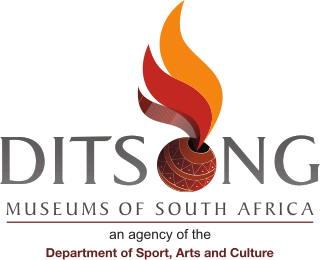
Ditsong Museums is an amalgamation of eight museums in the Pretoria and Johannesburg environs in the Gauteng Province. The museums "have diverse collections covering the fields of fauna and flora, palaeontology, military history, cultural history, geology, anthropology and archaeology."

Pionier Opelug Museum, is a cultural and "living" museum in the eastern suburbs of Pretoria that reflects the lifestyle of early pioneers or "Voortrekkers" of the early 19th century. It is housed in the oldest building in Pretoria, the 1848 House, and the museum is operated by Ditsong Museums of South Africa.
Ina Plug is a South African archaeozoologist, and teacher. Her long career included field research and in museums such as Transvaal Museum and for the University of Pretoria on southern African mammals, starting with the animals from Iron Age sites at the Kruger National Park. Her work resulted in her publishing 130 scientific papers mostly on the skeletal remains of animals. She also published a book titled What Bone Is That? A Guide to the Identification of Southern African Mammal Bones.
Pachydactylus barnardi, also known commonly as Barnard's rough gecko or Barnard's thick-toed gecko, is a species of lizard in the family Gekkonidae. The species is indigenous to Southern Africa.
Bolt's Farm is a palaeontological site in the Cradle of Humankind World Heritage Site, Gauteng province, South Africa. With more than 30 fossil deposits dating back 4.5 Ma, it is one of the oldest sites currently discovered in the Cradle of Humankind. It consists of multiple cavities, pits, and quarries, where caves have eroded away, exposing their fossiliferous interiors. Although this site has not yet yielded the hominid fossils for which the Cradle of Humankind is known, Bolt's Farm is still an important source of fossils from various species of Early Pliocene and Plio-Pleistocene fauna, including primates and big cats.
Minnaar's Cave, or simply Minnaar, is a palaeontological site located in the Cradle of Humankind World Heritage Site, Gauteng province, South Africa. Lost after its discovery in the 1930s, its location was rediscovered in 2009. It is known for its well-preserved jackal skulls, dating to the Plio-Pleistocene at least 2 million years ago.

















